 |
 |
|
|
 |
|
| |
 |
 |
|
1600
The East India Company is founded.
To
begin with it is called the Company of Merchants
of London trading into the East Indies.
It is founded by a Royal Charter, signed
by Queen Elizabeth I, on 31 December 1600.
Sir Thomas Smythe is the Company's first
Governor.
|
| |
|
|
|
|
| |
 |
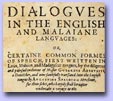 |
|
1601
The Voyages begin.
English
ships set out for the tiny Banda Islands
to trade woollen cloth and silver for spices.
The English traders meet Arab, Turkish,
Gujarati, Bengali, Malay and Chinese merchants
at the market. They all trade with goods
from their own countries.
|
| |
|
|
|
|
| |
 |
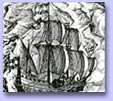 |
|
1623
Massacre at Amboina.
The
Dutch do not want to share their trade with
the spice islands. The East India Company
challenges this and on the clove island
of Amboina the Dutch torture and execute
English and Japanese traders.
|
| |
|
|
|
|
| |
 |
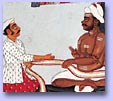 |
|
1640
The Company builds a trading centre at Madras.
After
the massacre at Amboina the Company concentrates
on trade with India. From its base in Madras
Indian cottons are shipped to the East Indies
to buy spices.
|
| |
|
|
|
|
| |
 |
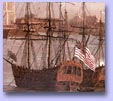 |
|
1662
The Company takes over Bombay.
The
Company grows in power. 5 new charters allow
it to acquire land and to form armies to
protect its trading centres. Its ships are
armed against possible attacks from pirates.
|
| |
|
|
|
|
| |
 |
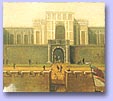 |
|
1690
The Company builds trading centres in Calcutta
There
is a great demand for all kinds of gorgeous
Indian textiles in England. Company servants
grow rich on the profits of trade.
|
| |
|
|
|
|
| |
 |
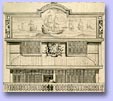 |
|
1697
London weavers attack East India House
People
in England protest that imports of Indian
cloth are a threat to their own industries.
This results in many Indian goods coming
to London and being re-exported.
|
| |
|
|
|
|
| |
 |
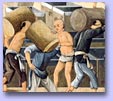 |
|
1699
Trade with China
The
Company begins to trade with Canton and
imports silk, tea and porcelain. In England
the demand for tea booms and by the late
1700s tea accounts for more than 60% of
the Company's total trade.
|
| |
|
|
|
|
| |
 |
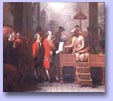 |
|
1757
Battle of Plassey
The
strength of the wealthy Mughal Empire weakens
and wars break out between different districts
of India. Robert Clive, a Company member,
recaptures Calcutta from Siraj-ud-Daulah,
Nawab of Begal at the Battle of Plassey.
The Company becomes responsible for India's
richest province.
|
| |
|
|
|
|
| |
 |
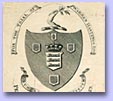 |
|
1773
Warren Hastings becomes the first British
governor-general in India
The
British government is concerned about the
way the Company is governing its Indian
territories and decides to curb its power.
It appoints Warren Hastings as the first
governor-general. He is charged with mismanagement
in 1785.
|
| |
|
|
|
|
| |
 |
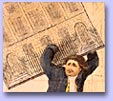 |
|
1813
The monopoly of all trade with India ends
The
Company's sole trade with India is stopped
but it continues to trade with China.
|
| |
|
|
|
|
| |
 |
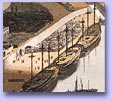 |
|
1833
The end of the East India Company's trading
days
During
the East India Company's life about 4,600
ships voyages were made from London. The
company is finally abolished in 1858 after
a rebellion by its Bengali Army.
|
| |
|
|
|
|